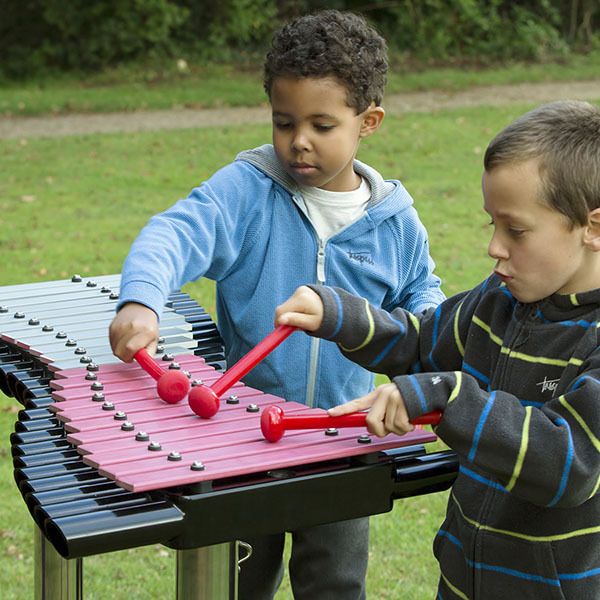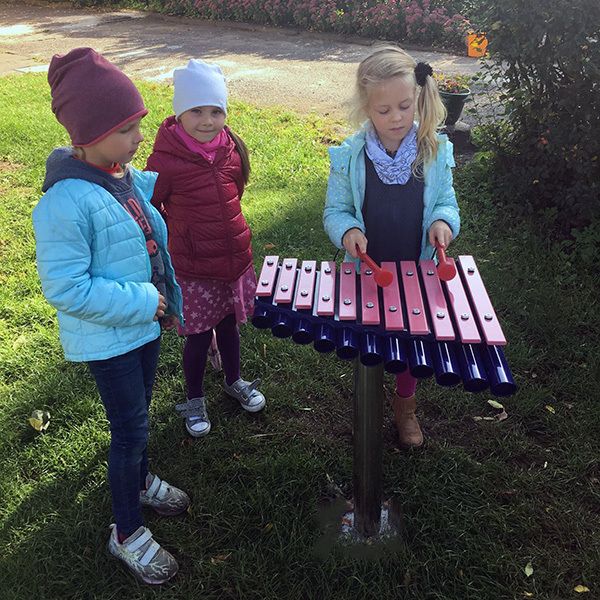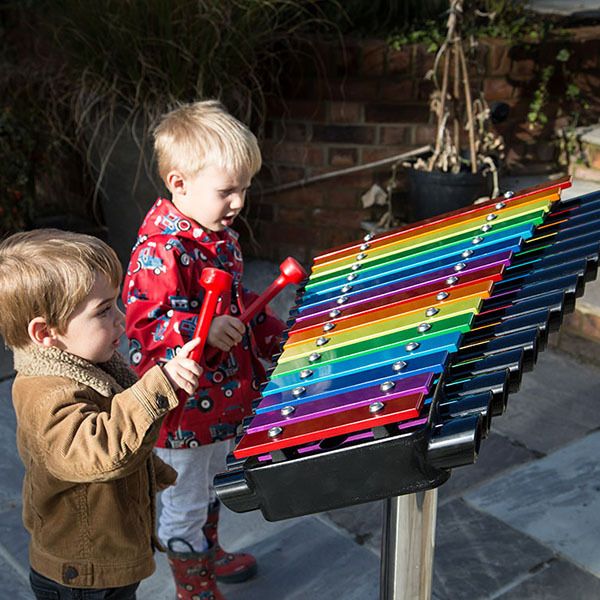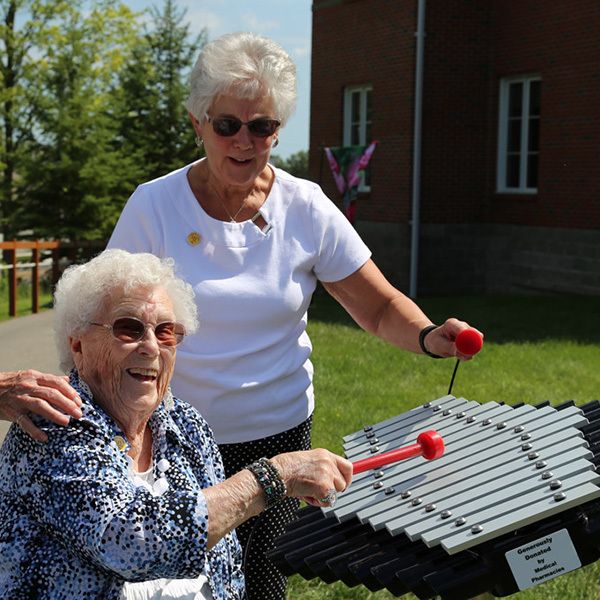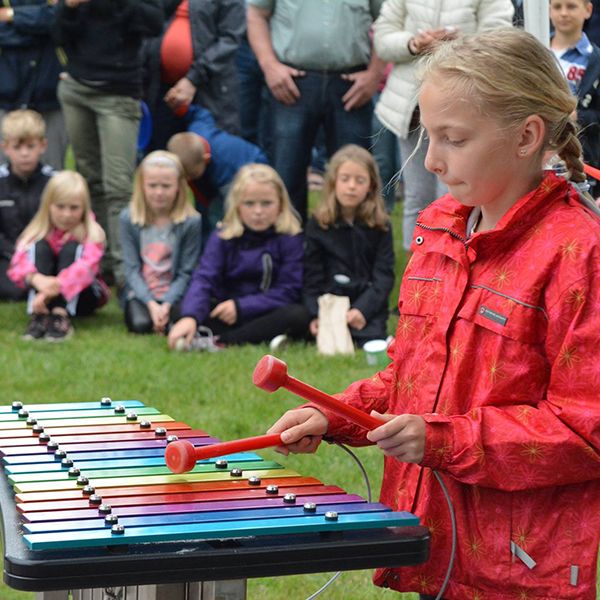Xylophones & Metallophones
Our xylophones and metallophones allow people to make some fantastic music without any lessons or training. Visitors love just playing around to discover the different kinds of sounds each instrument can make. They’ll soon discover how hard or soft to play, they’ll explore beat (pulse), rhythms, and experiment with creating their own melodies.
A metallophone is a term given to a family of percussion instruments consisting of a series of metal bars that make tones when struck. Typically, the metallophones resemble the wooden-bar xylophone, however, metallophones have metal bars. Basically, metallophones are played the same way as xylophones, by striking the metal bars with a beater or mallet.
The xylophone is named from the Greek ‘xylon’ meaning wood and ‘phone’ meaning sound or voice, the xylophone literally translated means a wooden voice. This instrument can be as simple as a few logs laid on the player’s legs or suspended over an earthen pit to a sophisticated precision made instrument.
Carl Orff used metallophones and xylophones in his approach to teaching children about music. The Orff Method is a way of teaching children about music using percussion instruments, engaging their body and mind through a mixture of singing, dancing, acting and playing music. All the lessons are presented with the emphasis on "play" thereby helping the children learn at their own level of understanding. Carl Orff believed the pentatonic scale was natural for children, so the Orff method focuses on its use for younger learners.
Percussion Play outdoor musical instruments and particularly the xylophones and metallophones are perfect for this improvised method of teaching and playing music. As well as fantastic school playground equipment they can easily be used in primary education as a resource to encourage children to develop their musical ability experimenting with rhythm. The majority of instruments in this category are tuned to a pentatonic scale to promote improvisation and free play with 'no wrong notes', and because of the wonderful easy sounds they make, these outdoor musical instruments are now increasingly being used for music therapy and in elderly care homes to create sound gardens for dementia care. With both types of instruments, the optimum sound from each bar is created by striking the note crisply in the middle of the bar. In time and with practice, different effects can be created by striking the bars in different places at varying speeds. In music theory, the diatonic scale is the fundamental building block of the Western musical tradition. The diatonic tuning allows the musically motivated to play hundreds of tunes, be creative and improvise to their heart’s content. We have an increasingly large number of outdoor musical instruments tuned to the diatonic scale to take teaching music outdoors to the next level. Added to the freedom often felt by being in the great outdoors, these instruments will encourage musical creativity and confidence.
The xylophone is named from the Greek ‘xylon’ meaning wood and ‘phone’ meaning sound or voice, the xylophone literally translated means a wooden voice. This instrument can be as simple as a few logs laid on the player’s legs or suspended over an earthen pit to a sophisticated precision made instrument.
Carl Orff used metallophones and xylophones in his approach to teaching children about music. The Orff Method is a way of teaching children about music using percussion instruments, engaging their body and mind through a mixture of singing, dancing, acting and playing music. All the lessons are presented with the emphasis on "play" thereby helping the children learn at their own level of understanding. Carl Orff believed the pentatonic scale was natural for children, so the Orff method focuses on its use for younger learners.
Percussion Play outdoor musical instruments and particularly the xylophones and metallophones are perfect for this improvised method of teaching and playing music. As well as fantastic school playground equipment they can easily be used in primary education as a resource to encourage children to develop their musical ability experimenting with rhythm. The majority of instruments in this category are tuned to a pentatonic scale to promote improvisation and free play with 'no wrong notes', and because of the wonderful easy sounds they make, these outdoor musical instruments are now increasingly being used for music therapy and in elderly care homes to create sound gardens for dementia care. With both types of instruments, the optimum sound from each bar is created by striking the note crisply in the middle of the bar. In time and with practice, different effects can be created by striking the bars in different places at varying speeds. In music theory, the diatonic scale is the fundamental building block of the Western musical tradition. The diatonic tuning allows the musically motivated to play hundreds of tunes, be creative and improvise to their heart’s content. We have an increasingly large number of outdoor musical instruments tuned to the diatonic scale to take teaching music outdoors to the next level. Added to the freedom often felt by being in the great outdoors, these instruments will encourage musical creativity and confidence.
